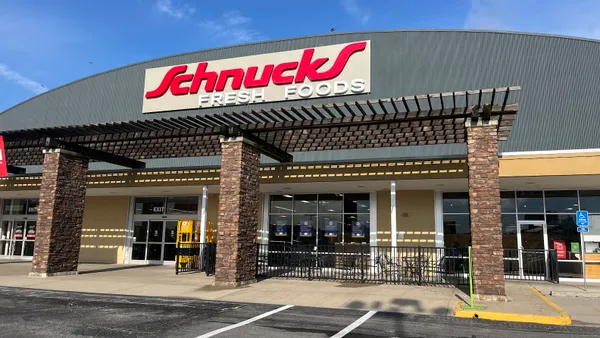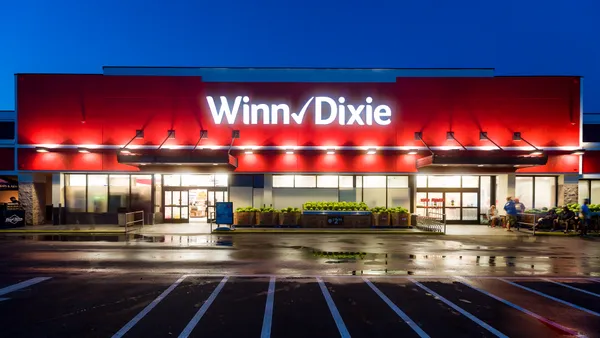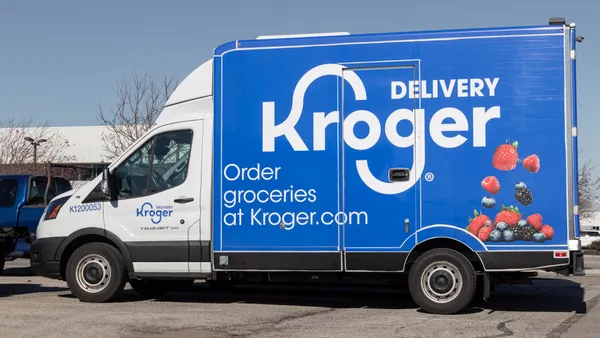Dive Brief:
- Up to 1.1 million American households receiving Supplemental Nutrition Assistance Program (SNAP) benefits could experience a $50 to $75 cut in their monthly benefit under the proposed House Farm Bill, while about 4 million households could see an increase of around $10 a month in benefits, according to a new analysis from Mathematica Policy Research funded by the Robert Wood Johnson Foundation. Among those households that would see a reduction in benefits, 79% to 84% have children and 70% to 80% live in poverty.
- The analysis takes a deeper look at how provisions in the bill would change the way SNAP benefits are calculated, including proposed changes to heating and cooling standard utility allowance requirements and earnings deductions. This is Mathematica's second in a series of reports that looks at the impact of proposed changes to SNAP under the House Farm Bill.
- "SNAP has a long and successful history of providing temporary help to reduce food insecurity, lift people out of poverty, help families achieve self-sufficiency and reduce health disparities. Any reforms to SNAP should be driven by analysis of impacts on access, equity, cost and program outcomes including food security, financial security and diet quality," said Giridhar Mallya, senior program officer for the Robert Wood Johnson Foundation, in a press release.
Dive Insight:
The existing U.S. farm bill expired on Sept. 30 after negotiations broke down in Congress, and lawmakers have just returned to Capitol Hill to ramp up their efforts again after midterm elections. Until a proposed bill passes both the House and the Senate and makes it to the president's desk, no actual changes to SNAP benefits will occur. The legislation is a major priority for lawmakers this session, especially before some of them leave office, so a version of it is likely to pass by year's end.
While these particular proposed changes to SNAP would reduce benefits for 3% to 5% of SNAP households, it would also give a modest boost in benefits to about 20% of them. There are about 39 million SNAP households in the U.S. that account for about 10% of food purchased for households, so although the benefits reduction isn't ideal from a revenue standpoint, it's unlikely to have a detrimental effect on the more than 250,000 food retailers that accept SNAP. The effect of SNAP changes would be far more significant for stores that rely heavily on SNAP shoppers, such as Dollar Tree and Dollar General as well as small, independent retailers in higher poverty areas.
The most recent data available shows that food retailers brought in about $70 billion in annual sales from SNAP redemptions. Grocery essentials such as lunch meat, bread, cereal and milk are among the top products that SNAP recipients purchase most, but they are also major buyers of soda, frozen foods and bagged snacks, which could impact soda brands and CPG companies.
As for SNAP recipients, if the proposed changes outlined in Mathematica's latest analysis took effect, they would have the most impact on families living in poverty, especially those with children. Seniors, people with disabilities and veterans are also reliant on SNAP, though they are not addressed in this particular report.
The SNAP program regularly sees proposed changes or undergoes adjustments — both temporary and permanent. In October, the USDA allowed SNAP recipients in Florida to redeem their benefits for hot foods in the wake of Hurricane Michael. Every year, SNAP recipients also see a benefits change with a cost-of-living adjustment. In addition, there have been major changes proposed to SNAP for the 2019 fiscal year based on the federal budget, though those changes would have to be approved by Congress.









